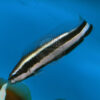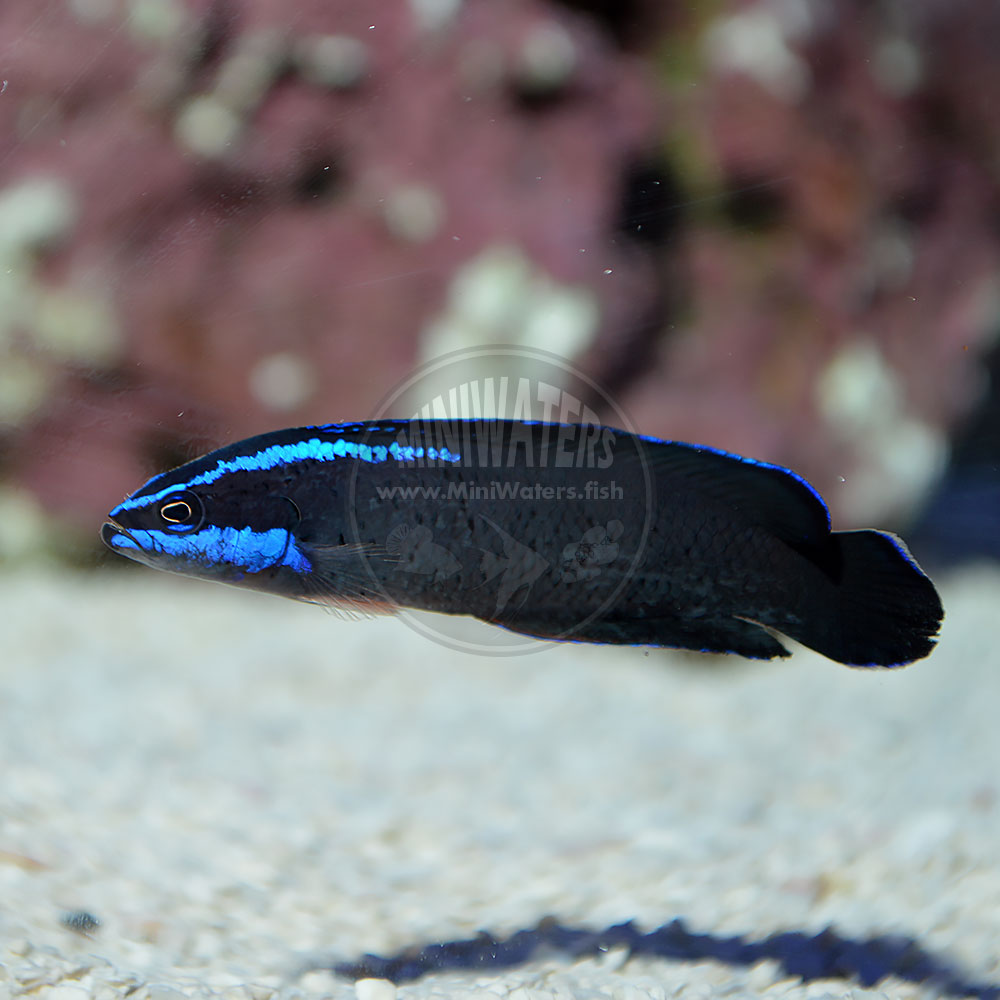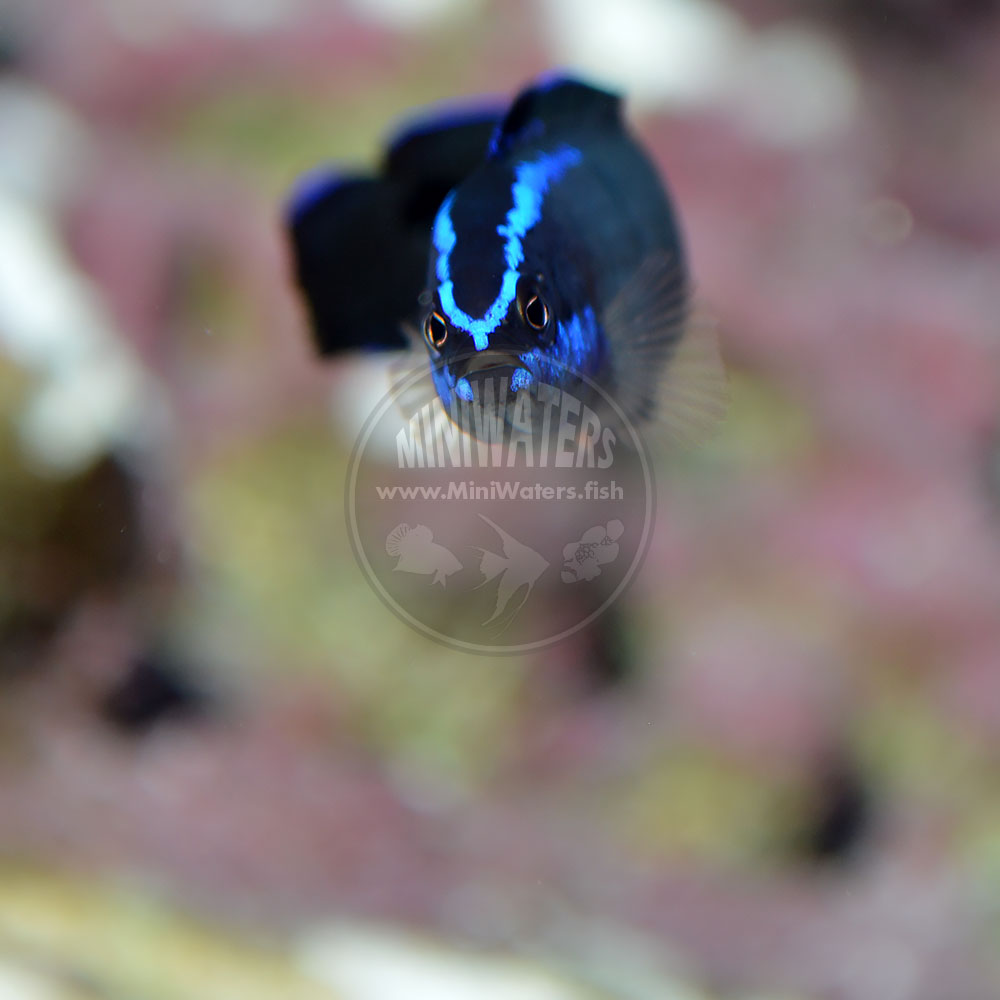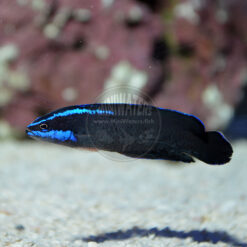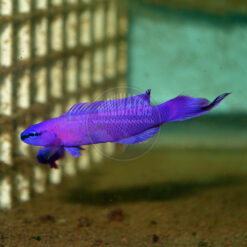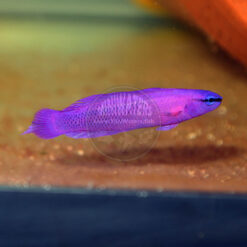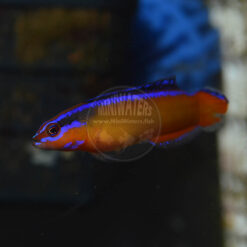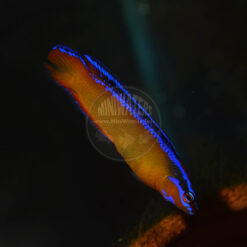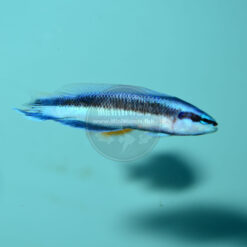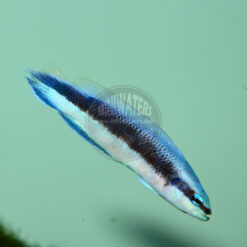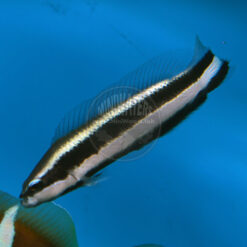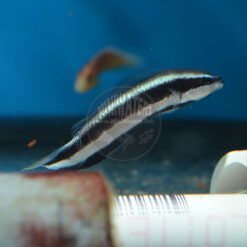Pseudochromis springeri “Springer’s Dottyback”, Captive Bred
$59.00 – $199.00
Dottybacks from the Red Sea, including the jet-black and blue Springer’s Dottyback (also known as the Blue Striped Dottyback), Pseudochromis springeri, have become staple offerings from ornamental marine fish breeders. Their widespread availability is bolstered by the fact that wild-caught versions of these species generally cost at least twice as much as the same species when captive-bred. Captive-bred dottybacks are incredibly resilient and hardy fishes.
Dottybacks’ reputation for aggression is, on the one hand deserved, but on the other hand, often blown out of proportion in my opinion. Of the Red Sea species, the Springeri Dottyback does seem to be a bit more on the aggressive side when compared to its relatives, but that aggression is mainly focused on other Dottybacks (including potential mates); I’ve managed to successfully pair this species in larger aquariums (eg. a 4′ X 1′ footprint) but it hasn’t gone well in tighter quarters.The costs of bonded pairs for this species is elevated due to the difficulties and risks associated with creating pairs!
Read below for more important information on the care and breeding of dottybacks.


